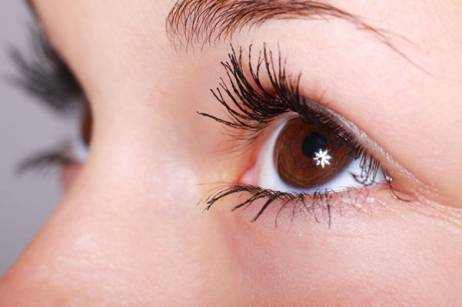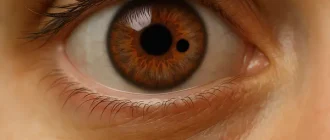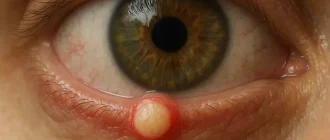Presbyopia is an age-related vision condition that makes it difficult to focus on close objects. Typically starting around the age of 40, it gradually worsens over time. Unlike nearsightedness or farsightedness, which result from the shape of the eyeball, presbyopia is caused by the hardening of the eye’s natural lens, reducing its ability to change shape and focus on near objects.
Most Popular Presbyopia Treatments: Glasses vs. Surgery vs. Contacts
| Treatment | Popularity (%) |
|---|---|
| Reading Glasses | 60% |
| Bifocal/Progressive Glasses | 25% |
| Multifocal Contact Lenses | 10% |
| Surgery (LASIK/RLE/Inlays) | 5% |
This chart illustrates the popularity of different treatments for presbyopia. Reading glasses are the most commonly chosen solution, while surgical options remain the least popular.
Symptoms of Presbyopia
- Difficulty reading small print, especially in low light, similar to age-related vision decline but distinct from conditions like cataracts, which also cause glare sensitivity.
- The need to hold reading materials at arm’s length, whereas myopia (nearsightedness) results in difficulty seeing distant objects rather than near ones.
- Eye strain and headaches after prolonged close-up work, which can also occur with digital eye strain, though presbyopia-related strain persists even after screen breaks.
- Blurry vision when switching between near and far distances, in contrast to astigmatism, which causes persistent blurriness at all distances rather than just during transitions.
Presbyopia Symptoms: Most Common Complaints Among Patients
The chart illustrates the most common complaints among presbyopia patients, highlighting the challenges they face in daily activities like reading and focusing on near objects.
Causes and Risk Factors
The primary cause of presbyopia is the gradual loss of flexibility in the eye’s crystalline lens. Other contributing factors include:
- Age: The condition is almost universal after 40. As the lens loses elasticity over time, the ability to focus on near objects diminishes progressively. Studies suggest that nearly everyone over the age of 50 experiences some degree of presbyopia.
- Genetics: Family history may play a role, as genetic predisposition influences the speed and severity of lens hardening. If parents developed presbyopia early, their children may experience it sooner as well.
- Underlying Health Conditions: Diabetes, cardiovascular disease, or multiple sclerosis can exacerbate symptoms. Poor circulation associated with these conditions may affect eye health, leading to an earlier onset or more pronounced symptoms.
- Medications: Certain drugs, including antihistamines and antidepressants, may contribute to early onset. Some diuretics, antipsychotics, and anti-anxiety medications can also reduce focusing ability by affecting eye muscles and nerve function.
Diagnostic Methods
An eye doctor (optometrist or ophthalmologist) can diagnose presbyopia through a comprehensive eye exam. The most common tests include:
- Visual Acuity Test (Accuracy: 9/10) – Measures clarity of vision at different distances.
- Refraction Test (Accuracy: 9/10) – Determines the best lens prescription.
- Accommodation Test (Accuracy: 8/10) – Assesses how well the eyes can adjust focus between near and far objects.
- Slit-Lamp Examination (Accuracy: 7/10) – Examines the eye structures for other possible conditions.
Presbyopia Diagnosis Rates: How Many Get Regular Eye Exams?
The chart illustrates how frequently people undergo eye exams for presbyopia diagnosis, showing that a significant portion does not get regular check-ups.
Modern Treatment Options
Eyewear Solutions
- Reading Glasses – Simple and effective for mild cases. These glasses magnify text and objects, reducing the need for the eyes to strain. They are available in a range of strengths and can be purchased over the counter or prescribed by an eye doctor. Many individuals find that a backup pair is helpful for different activities, such as reading and working on the computer.
- Bifocal or Progressive Lenses – Offer correction for both near and far vision. Bifocal lenses have a visible line separating the near and distance vision correction, while progressive lenses provide a smooth transition between different prescriptions, eliminating the need for multiple pairs of glasses. They can take some time to adjust to, but many patients find them to be the most convenient long-term solution.
- Multifocal Contact Lenses – Provide a seamless transition between distances. These lenses come in soft and rigid gas-permeable forms and use different focusing zones for near and far vision. Some patients experience an adjustment period as their brain adapts to switching between focus levels, but once accustomed, multifocal contacts offer significant freedom from glasses. Custom-made options ensure a better fit and comfort for extended wear.
Surgical Innovations
- Corneal Inlays (e.g., KAMRA Inlay) – A small implant placed within the cornea to improve near vision. The procedure is performed under local anesthesia and takes about 10–15 minutes. Patients usually notice improved vision within a few days, with full results in a few weeks. Effectiveness: 8/10.
- Refractive Lens Exchange (RLE) – The natural lens is replaced with an artificial intraocular lens (IOL). The surgery is similar to cataract surgery, takes about 15–30 minutes per eye, and requires a few weeks for full recovery. It is highly effective (9/10) and provides long-term vision correction.
- Monovision LASIK – A laser reshapes the cornea so that one eye is optimized for near vision while the other remains focused on distance. The procedure takes about 10 minutes per eye, and results are noticeable within a few days. Some patients need time to adjust to monovision, but it is an effective alternative to glasses (8/10).
Cost Comparison of Presbyopia Treatments: Glasses vs. Surgery
| Treatment | Average Cost (USD) |
|---|---|
| Reading Glasses | $50 |
| Bifocal/Progressive Glasses | $250 |
| Multifocal Contact Lenses (Annual) | $500 |
| LASIK Surgery | $2,500 |
| Refractive Lens Exchange (RLE) | $3,500 |
This chart compares the average costs of various presbyopia treatments. While glasses offer a low-cost solution, surgical options like LASIK and RLE are significantly more expensive.
Real-Life Medical Cases in the U.S.
- Case of a 45-year-old woman from Texas: Initially struggled with reading menus and text messages. She opted for progressive lenses and reported significant improvement.
- Case of a 50-year-old man from California: Chose corneal inlays after finding reading glasses inconvenient. He regained clear near vision without needing glasses.
- Case of a 55-year-old executive from New York: Underwent RLE and no longer requires any corrective eyewear.
Editorial Advice
Reyus Mammadli, healthcare advisor, recommends regular eye exams after the age of 40, even if no symptoms are present. Early detection ensures better management of presbyopia and helps rule out other vision problems.
Age at Which Presbyopia Symptoms First Appear
The chart illustrates the ages at which people commonly start experiencing presbyopia symptoms, with the majority noticing changes between 40 and 49 years old.
Additionally, consider lifestyle adjustments like improving lighting when reading and taking frequent breaks from screens to reduce eye strain. Those considering surgical options should consult with an experienced ophthalmologist to determine the best approach for their vision needs.





